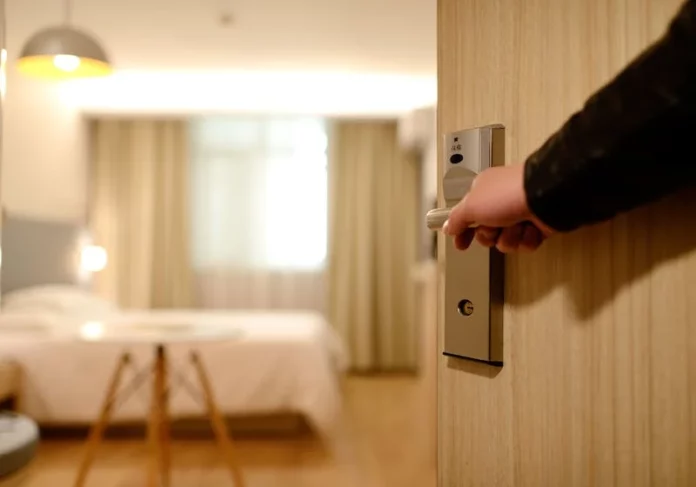Installing internal doors is an easy DIY project that any amateur handyman or woman can tackle in their own home. Not only will completing the job yourself save you a significant amount on labor costs, but it’s also gratifying to know that you’ve achieved something great with your hands! We’ll take you through step-by-step instructions for installing an internal door in no time at all. Whether it be a hinged door, sliding door, or bifold door. We’ll include tips and tricks so first-time do-it-yourselfers can enjoy success with their projects.
Introduction: The Benefits of Installing Internal Doors Yourself
Buying and installing internal doors can be cheaper than having a contractor do it for you. These savings extends to the materials used in the door installation. You get to choose wood or metal at lower prices than a contractor.
The second benefit is flexibility in choosing a style for your internal doors. Internal doors come in a wide range of styles, from contemporary internal doors to classic wooden paneling options, so there’s something out there to fit nearly any taste or budget. When shopping for and installing these doors, you have much more freedom to choose designs and colors that match your existing décor and fit any specific needs or preferences that you may have.
Installing internal doors gives you great peace of mind in knowing that your home is secure. These doors provide physical security against unwanted visitors and give a sense of safety regarding noise control and air filtration. Installing high-quality internal doors helps keep the noise from outside sources out while ensuring fresh air gets in when needed, giving you peace of mind and making your home more comfortable.
Step-by-Step Guide to Installing a Hinged Door
Installing a hinged door is an important part of home improvement that should not be taken lightly. It’s best to call in a professional if you need clarification on your DIY skills, but if you do feel comfortable tackling the project yourself, it can be a rewarding experience. Here’s a step-by-step guide to help make the process as smooth as possible.
The first step is to purchase your door and the necessary installation materials. Measure your doorway openings before buying a door that fits properly. Depending on the type of door you’ve purchased, you’ll also need shims, screws, hinges, a jamb kit, and weatherstripping.
Next, prepare the area for installation by removing any existing trim or hardware from the door opening. Then, use wood shims to level and square up the new jamb along with the bottom plate of the frame. Secure them into place with galvanized nails or screws; don’t forget to caulk any gaps between plates and wall studs afterward.
Install the remaining jambs according to the instructions provided with your new door set (some doors may require additional jamb pieces). Once in place, secure all jambs together with nails or screws. If needed, install weatherstripping at this stage; otherwise, wait until after hanging your new door.
Now it’s time to hang your new hinged door – start by attaching two hinges on each side of the jamb (4 total) about 60 cm apart from one another (measure often). Be sure that all hinges are firmly attached using appropriate screws. Place your new door within its frame and make sure it swings freely by adjusting hinge positions if necessary (wiggle is ok).
Finally, attach any remaining decorative trim around the edge of your newly installed hinged door, such as casing or molding. Add a finishing touch by installing knobs or handsets once everything else has been secured. With these simple steps, anyone can install their own hinged door quickly and easily!
Tips and Tricks for Sliding and Bifold Doors
Firstly, measuring the space accurately is essential to ensure your door fits perfectly. It’s also important to check that the door is level and that all components are aligned correctly. When measuring for a sliding door, it’s best practice to leave an extra two inches of space at the top and bottom of the frame so it can slide freely without getting stuck or jammed.
When installing a bifold door, ensure you leave enough room between each panel so it will open and close properly. If the panels are too close together, they may need more clearance. Additionally, ensure that all hinges on the panels are tight enough, so they hold up well over time but not so tight that they strain the structure of your frame or cause damage to the panels themselves.
In terms of maintenance, regularly clean your sliding or bifold doors with warm water and mild detergent. This will prevent dirt or debris from building up, which could cause damage when opening or closing them. If possible, lubricate any hinges with machine oil, too, as this will help keep everything running smoothly over time.
Conclusion: Enjoy the Rewards of DIY Projects!
Installing new internal doors is a great DIY project and doesn’t need to be complicated. Not only will you enjoy the satisfaction of taking on a challenge but updating these common features of your living space are sure to bring a much-needed breath of fresh air. With some patience and concentration, installing an internal door can prove a surprisingly fun project. Not to mention financially sensible!




